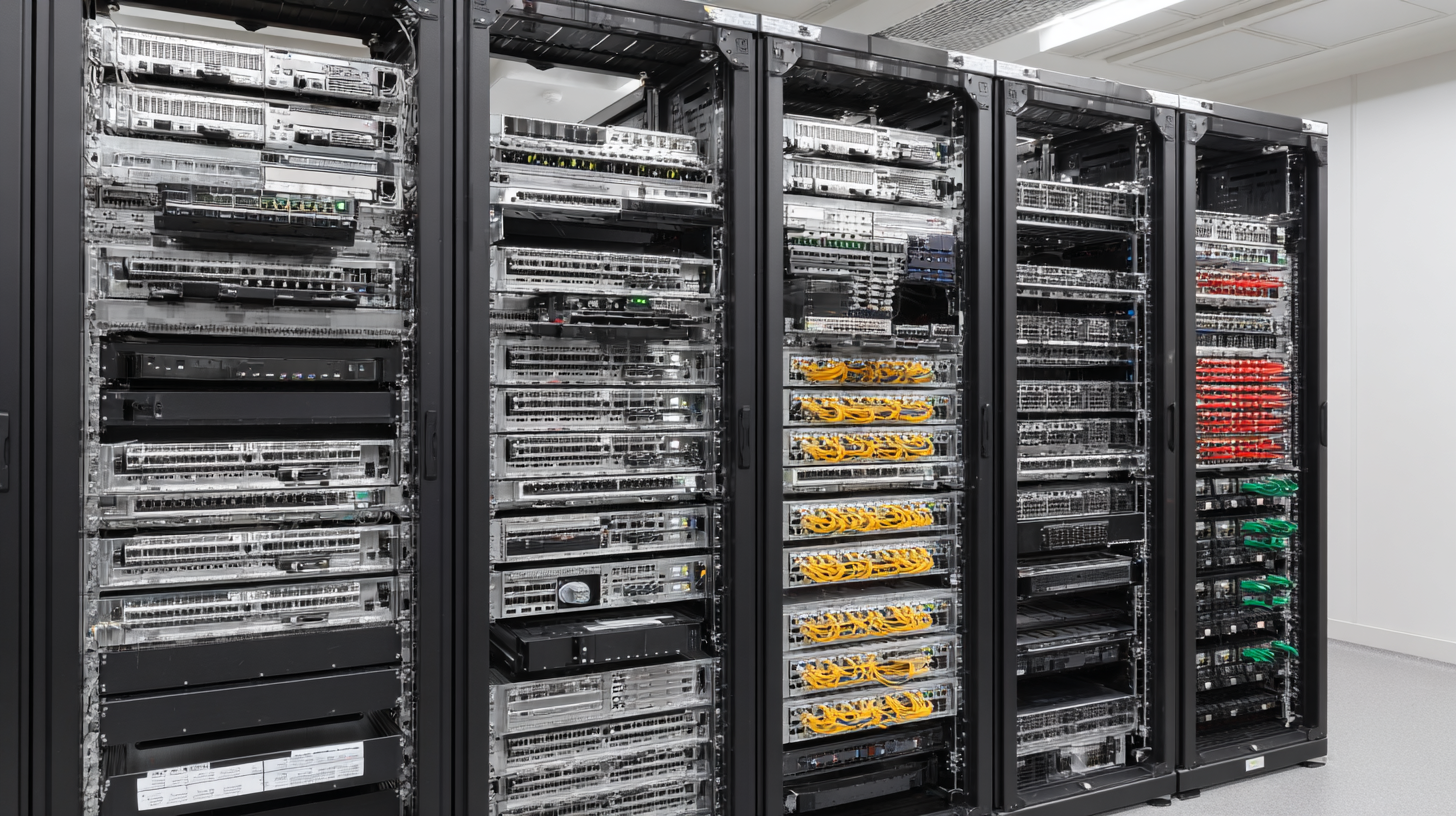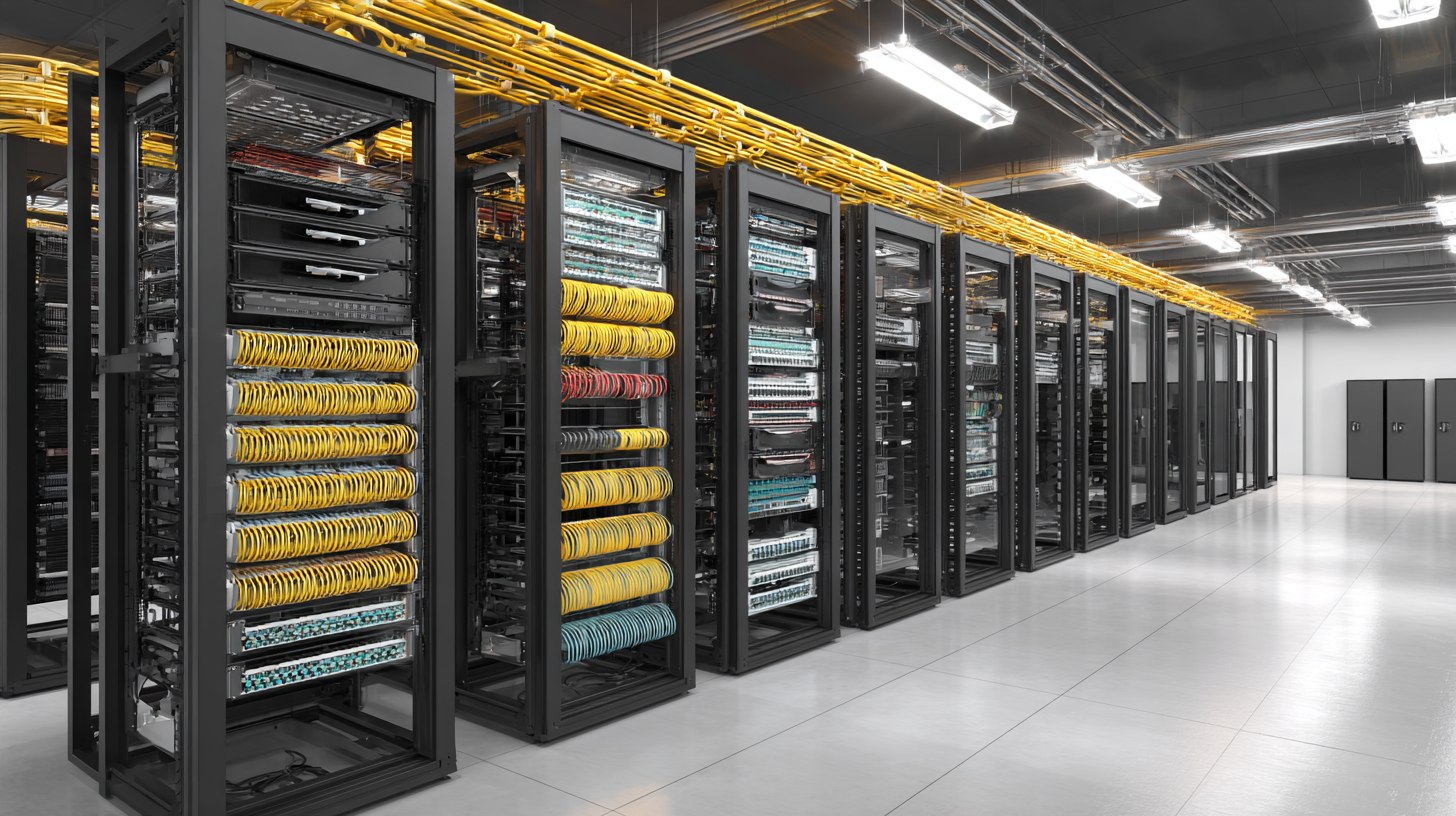Understanding Industry Standards for Optimal Best Wall Mount Racks Selection
In the ever-evolving landscape of technology and equipment management, the selection of wall mount racks has become pivotal for both efficiency and space optimization. Industry reports indicate that a well-designed wall mount rack can increase equipment accessibility by up to 40%, significantly enhancing operational workflows.
 Furthermore, with the global wall mount rack market projected to reach $1.8 billion by 2027, it is essential for businesses to stay informed about industry standards and best practices. Understanding the diverse types of wall mount racks available—ranging from basic models to advanced configurations—enables organizations to make informed choices that align with their specific needs. As industries continue to adapt to the demands of modern infrastructure, grasping the nuances of wall mount rack selection will play a crucial role in ensuring optimal performance and longevity of valuable equipment.
Furthermore, with the global wall mount rack market projected to reach $1.8 billion by 2027, it is essential for businesses to stay informed about industry standards and best practices. Understanding the diverse types of wall mount racks available—ranging from basic models to advanced configurations—enables organizations to make informed choices that align with their specific needs. As industries continue to adapt to the demands of modern infrastructure, grasping the nuances of wall mount rack selection will play a crucial role in ensuring optimal performance and longevity of valuable equipment.
Understanding the Importance of Quality Customer Service in Wall Mount Rack After-Sales Care
Quality customer service is a crucial aspect often overlooked when selecting wall mount racks. After making a purchase, customers should feel supported and valued. A responsive after-sales service can significantly enhance the overall experience, ensuring that any issues are resolved quickly and efficiently. For instance, offering a straightforward return or exchange policy can foster trust and customer satisfaction, giving consumers peace of mind in their investment.
When choosing a provider, look for those who prioritize customer care. A good tip is to research their reputation through reviews and testimonials. This can provide insights into how previous customers were treated post-purchase. Additionally, consider companies that offer comprehensive support, including installation assistance, troubleshooting guides, and customer helplines.
Moreover, proactive communication is key. After the sale, suppliers who check in with customers for feedback or offer maintenance tips tend to build lasting relationships. This not only aids in customer retention but also promotes loyalty, encouraging buyers to return for future purchases. By emphasizing quality customer service, businesses can stand out in the wall mount rack market, ensuring their clients receive the care and attention they deserve.
Analyzing Repair Costs: Comparing Different Types of Wall Mount Racks and Their Maintenance Expenses
When choosing the right wall mount rack, understanding repair costs and maintenance expenses is crucial for long-term investment. Different types of wall mount racks come with varying material quality and design, impacting potential repair costs. For example, sturdy metal racks may initially cost more but can endure heavier loads and frequent use, thus reducing repair frequency and associated expenses over time. In contrast, lightweight wall mount racks made from plastic or lower-grade materials may require frequent replacements or repairs due to stress or environmental factors, leading to higher maintenance costs.
Additionally, analyzing the specific use case of the wall mount rack is essential. For instance, racks intended for commercial use may experience more wear and tear compared to those used in residential settings. This factor influences the expected lifespan and ongoing maintenance budget. Users should consider not only the upfront costs of the racks but also the long-term financial impact of repair and maintenance. By making informed decisions about the type of wall mount rack to invest in, one can effectively manage expenses while ensuring optimal functionality and durability.

Key Industry Standards: Ensuring Compatibility and Performance in Selecting Wall Mount Racks
 When selecting wall mount racks for your tech setup, understanding industry standards is crucial to ensure compatibility and optimal performance. The Telecommunications Industry Association (TIA) outlines specifications for rack designs that cater to various equipment sizes and weights, ensuring that installations are safe and efficient. For instance, TIA-569-C provides vital guidelines on the necessary space and support for various cabling systems, which can influence the design and selection of wall racks.
When selecting wall mount racks for your tech setup, understanding industry standards is crucial to ensure compatibility and optimal performance. The Telecommunications Industry Association (TIA) outlines specifications for rack designs that cater to various equipment sizes and weights, ensuring that installations are safe and efficient. For instance, TIA-569-C provides vital guidelines on the necessary space and support for various cabling systems, which can influence the design and selection of wall racks.
Additionally, the American National Standards Institute (ANSI) has established the ANSI/EIA-310 standard, which defines the dimensions and mounting hole configurations for racks and enclosures. This standard ensures that equipment from different manufacturers can be interchanged without issues, fostering a competitive market while guaranteeing quality. Research from industry leaders indicates that adherence to these standards can reduce installation errors by up to 30%, ultimately leading to decreased downtime and enhanced operational efficiency. Making informed choices based on established standards not only streamlines the installation process but also significantly improves system performance over time.
Real-World Examples: Cost-Benefit Analysis of Investing in High-Quality Wall Mount Racks
When considering the investment in high-quality wall mount racks, conducting a cost-benefit analysis reveals significant advantages. According to a recent report by MarketsandMarkets, the global market for wall mount racks is expected to grow from $2.2 billion in 2023 to $3.5 billion by 2028, indicating a rising trend in demand for durable and efficient storage solutions. This growth is driven by the increasing need for organized workspaces in both commercial and residential environments, where high-quality racks can enhance productivity and safety.
Evaluating the upfront costs versus long-term benefits, businesses often find that investing in premium wall mount racks pays off over time. Data from Statista suggests that companies that prioritize quality in their equipment experience 20% fewer equipment failures and maintenance costs. Moreover, the efficiency gained from optimizing space and reducing clutter contributes positively to operational workflow, leading to an estimated 15% increase in overall productivity. Such statistics underscore the importance of selecting industry-standard wall mount racks that not only meet immediate storage needs but also provide significant cost savings and operational benefits down the line.
The Impact of Enhanced After-Sales Support on Customer Satisfaction and Loyalty in the Rack Industry
In the rack industry, enhanced after-sales support plays a pivotal role in shaping customer satisfaction and fostering loyalty. When customers invest in wall mount racks, they seek not just a product but a partnership that continues long after the purchase. This ongoing relationship is upheld by robust after-sales services, such as timely support, installation guidance, and fault resolution, which collectively contribute to a positive user experience. Companies that prioritize these services demonstrate commitment to their customers, ultimately creating a reliable brand image that encourages repeat business and referrals.
Moreover, the significance of after-sales support transcends basic customer service. It provides an opportunity for manufacturers and suppliers to gather valuable feedback, allowing them to understand customer needs and improve their products continually. In a competitive market, those who offer substantial after-sales assistance not only differentiate themselves but also build a community of loyal users. As customers feel more connected and appreciated, their likelihood of returning for future purchases multiplies. Thus, businesses that invest in exceptional after-sales support not only enhance customer satisfaction but solidify their position in the industry as trusted partners.
| Standard Criteria | Importance Level (1-5) | After-Sales Support Rating (1-5) | Customer Satisfaction (%) | Customer Loyalty (%) |
|---|---|---|---|---|
| Durability | 5 | 4 | 90 | 85 |
| Ease of Installation | 4 | 5 | 88 | 80 |
| Weight Capacity | 5 | 4 | 92 | 87 |
| Aesthetic Design | 3 | 4 | 75 | 70 |
| Cost-effectiveness | 4 | 3 | 78 | 72 |
